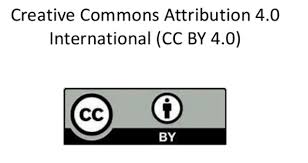Integrated Use of Remote Sensing and Climate Parameters to Explore Boro Rice (Oryza sativa L.) Cultivation Area and Driver of Expansion in Tangail Sadar Upazila
DOI:
https://doi.org/10.47440/JAFE.2021.2403Keywords:
Boro rice, climate parameters, drought index, land-use change, remote sensingAbstract
Crop area estimation and identification of drivers for land-use change are crucial for efficient crop management and decision-making in agriculture. Remote Sensing techniques are now being used to estimate crop area and production monitoring globally, including developing countries. In Bangladesh, rice area estimation has traditionally been done through location-based field visits or eyeestimation, which is tedious and time-consuming. The present study uses Remote Sensing (RS) and climate parameters to explore the cultivation area and driver of boro area expansion in Tangail Sadar Upazila. Multi-spectral Landsat imageries were obtained from 1999 to 2020 at the maximum growth stages of boro rice. Upazila's boundary was clipped over the images using a shape file created from Bangladesh map. The images were analyzed with QGIS, ArcGIS, and R software through the Random Forest (RF) supervised classification. Standardized Precipitation Evapotranspiration Index (SPEI) was calculated using monthly total rainfall; minimum and maximum temperature to observe drought impacts. The findings revealed that the boro rice cultivation gradually increased from 8104 ha (in 1999) to 12781 ha (in 2020). In 2009-20, the expansion rate (3.10 percent) of boro rice areas was much lower (11.49 percent) than in 1999-2009. It was due to relatively stable boro cultivation in the recent decade. The Overall accuracy was 93-96 percent with the kappa coefficient of 0.90-0.93. The study showed that there was a good relationship between satellite and traditionally estimated boro rice area. The expansion of boro rice areas has been driven mainly by the positive impacts of climate change. Long-term hydrological drought and a shorter wet spell have introduced boro rice cultivation to the lowlands and river basin areas. According to the benefit cost ration (BCR), growing mustard and boro rice in the same season was more profitable than growing any sole crop. The study revealed that remote sensing was effective for exploring boro rice cultivation area and driver of expansion.






 Publisher:
Publisher: 